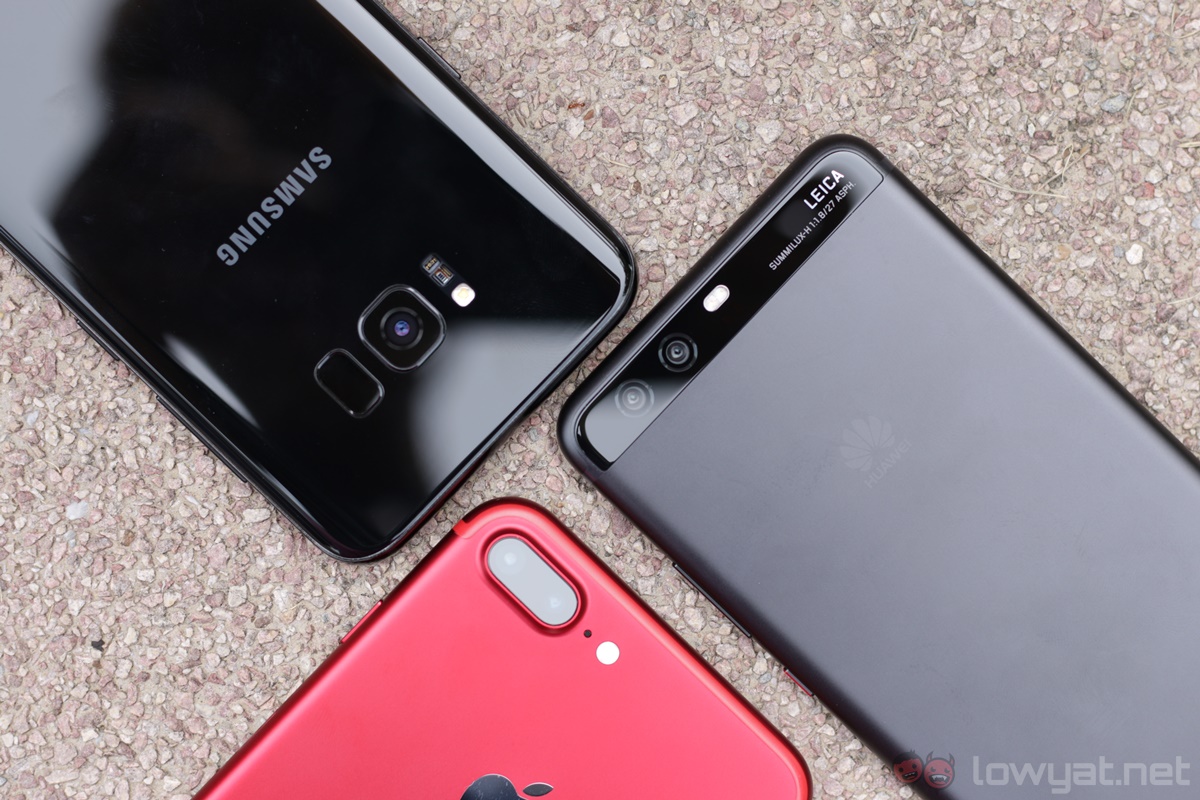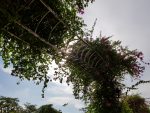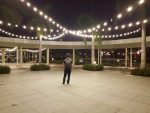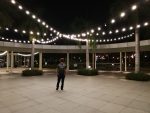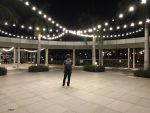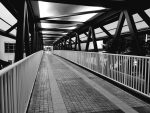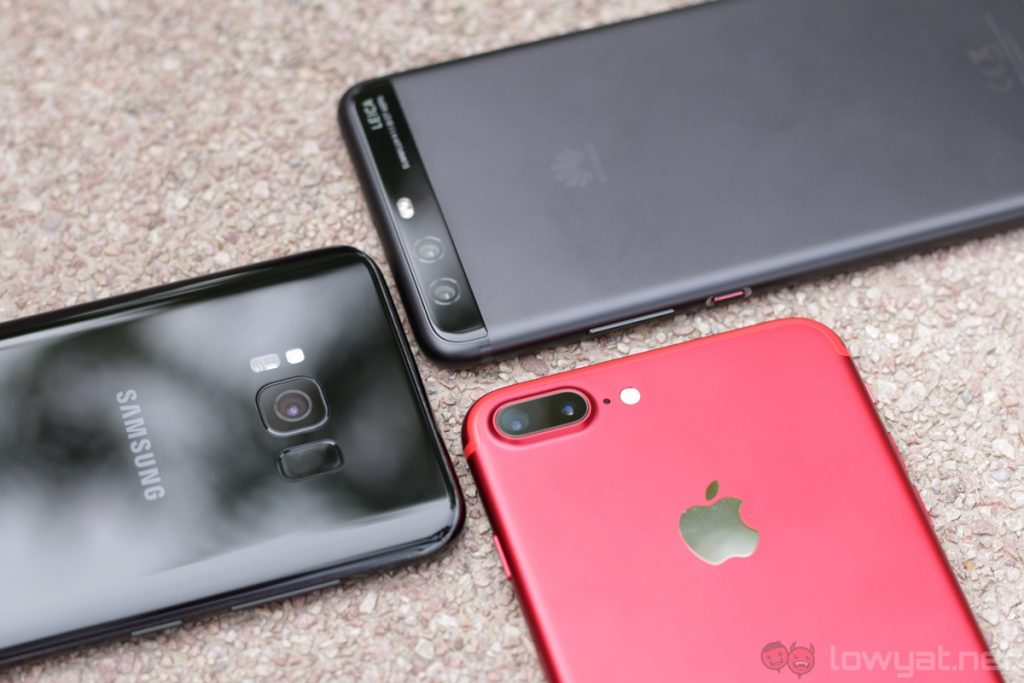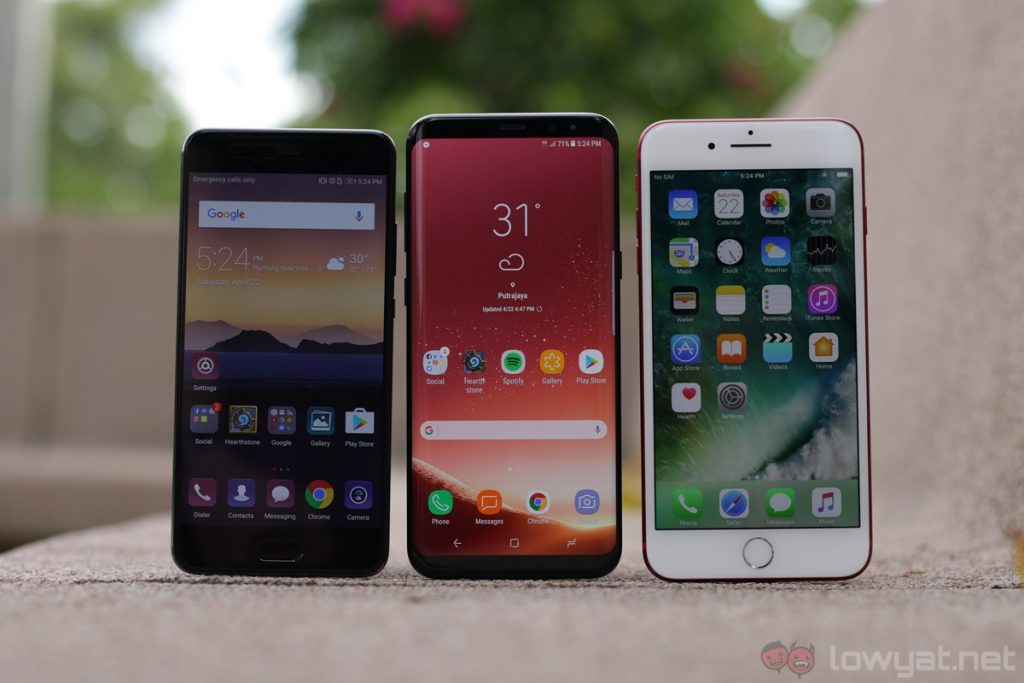It’s been almost a week since we posted our blind camera comparison, and we’ve seen some rather interesting observation from you guys. Well, it’s now time to reveal which smartphone took which picture, and some of you – even those in our own editorial team – may be surprised with the results.
The results are labelled from left to right, in the same order posted in the original blind camera comparison.
Daytime
Samsung Galaxy S8+, iPhone 7 Plus, Huawei P10 Plus
At a glance, the Galaxy S8+ certainly took the best-looking image here. It’s not quite as warm as the iPhone 7 Plus’ and P10 Plus’ images, its detail preservation is better, and overall, the S8+’s shot just looks more…appealing. In fact, the 7 Plus’ shot is actually slightly overexposed.
iPhone 7 Plus, Huawei P10 Plus, Samsung Galaxy S8+
This set of images is a tough one. Although the P10 Plus managed to capture both the sky and lower level’s details – the other two shots completely overblown the clouds – the Galaxy S8+’s shot has better detail preservation.
Samsung Galaxy S8+, Huawei P10 Plus, iPhone 7 Plus
Much like the first set of images, the 7 Plus’ shot is more overexposed compared to the other two devices. Surprisingly enough, however, the Galaxy S8+ took the darkest image; it struggled quite a bit to get the correct exposure. Nonetheless, the P10 Plus definitely took the best shot: the exposure is balanced, and the colours are not as washed out as the 7 Plus’ image.
Samsung Galaxy S8+, iPhone 7 Plus, Huawei P10 Plus
Here, both the Galaxy S8+ and P10 Plus took very good shots. They’re properly exposed – unlike the iPhone’s shot – and while the S8+ has better dynamic range, the P10 Plus’ slower shutter speed makes for a more flattering exposure.
Now that we’ve got the daylight shots covered, let’s move on to more challenging shooting conditions, starting with our low light shots.
Low Light
iPhone 7 Plus, Samsung Galaxy S8+, Huawei P10 Plus
In less than ideal lighting, the P10 Plus starts to show its weakness. The P10’s shot is darker than the other two phones, and it also did not manage to capture as much detail. The loss of detail on the cabinet clearly shows this.
Between the Galaxy S8+ and iPhone 7 Plus’ shots, on the other hand, the S8+ sports better dynamic range and exposure. From what we’ve observed, the 7 Plus has the tendency to slightly overexpose images.
Huawei P10 Plus, Samsung Galaxy S8+, iPhone 7 Plus
Again, the Galaxy S8+’ shot is the most appealing here. It has better dynamic range – we’re saying this very often at this point – just the right amount of exposure, and the colours are more true to life. Take the iPhone 7 Plus’ image: the dining area definitely didn’t look that washed out.
Samsung Galaxy S8+, Huawei P10 Plus, iPhone 7 Plus
Although the Galaxy S8+’s shot isn’t as bright as the other two images, it definitely looks the most true to life in this landscape shot. The S8+’s detail preservation is superior, and it’s not quite as noisy as the P10 Plus and iPhone 7 Plus’ images.
Samsung Galaxy S8+, Huawei P10 Plus, iPhone 7 Plus
The Galaxy S8+ has consistently taken the best-looking low light shots so far, and the same still applies in this set of images. It’s the brightest shot, and despite the slight flare effect on the light bulbs, its detail preservation is simply better than the iPhone 7 Plus and P10 Plus.
The Galaxy S8+’s camera evidently has superior low light performance, but let’s move on to the P10 Plus’ strength next: black and white photography.
Black & White
Samsung Galaxy S8+, Huawei P10 Plus, iPhone 7 Plus
Without a shadow (heh) of a doubt the P10 Plus’ shot looks the best. It has good exposure, and it doesn’t look quite as artificial as the Galaxy S8+ and iPhone 7 Plus’ images. This shouldn’t come as a surprise, of course: the P10 Plus has a dedicated monochrome sensor, while the other two devices rely on filters instead.
iPhone 7 Plus, Samsung Galaxy S8+, Huawei P10 Plus
Surprise surprise: the Galaxy S8+’s black and white shot is the best one here. Not only does the S8+ image sport better detail preservation and contrast, it also doesn’t look quite as dark or washed out as the P10 Plus’ image.
Samsung Galaxy S8+, Huawei P10 Plus, iPhone 7 Plus
Again, the Galaxy S8+’s image stands out in this set of images thanks to its superior contrast and exposure. Just look at the Eubiq sign in the shots above: the S8+ and iPhone 7 Plus managed to capture it just fine, but the P10 Plus struggled quite a bit.
Macro
Huawei P10 Plus, Samsung Galaxy S8+, iPhone 7 Plus
In these macro shots, both the Galaxy S8+ and iPhone 7 Plus images look the most appealing – even if both sensors interpreted the colours of the flower rather differently. The P10 Plus struggled to capture the different hues of red on the flower. I am leaning towards the Galaxy S8+, but others may prefer the softer hues on the iPhone.
iPhone 7 Plus, Samsung Galaxy S8+, Huawei P10 Plus
Surprisingly, the P10 Plus’ shot is the most saturated in this set of images, which make for a rather artificial-looking image. Also, while we couldn’t get the iPhone 7 Plus to focus on the sushi in the foreground, it sports the most true to life colour. However, we have to give it to the Galaxy S8+ here: it was easy for us to focus solely on the sushi in front, and the details on the salmon make it look particularly appetising.
Portrait
Samsung Galaxy S8+, iPhone 7 Plus, Huawei P10 Plus
Here’s where it gets ironic. Portrait shooting is supposed to be the iPhone 7 Plus and P10 Plus’ strengths, but yet, the Galaxy S8+ took the best portrait shot. Sure, its depth of field processing in Selective Focus Mode isn’t quite as refined as the other two devices – it only has a single rear camera, after all – but its detail preservation is better than the other two images.
Then again, it’s worth noting that the iPhone 7 Plus sports the most true to life colour, but it’s also the noisiest picture: the telephoto lens used in Portrait Mode only has a small f/2.8 aperture. As for the P10 Plus, it has a tendency to oversaturate images in Portrait Mode, but it can work in its favour in the right shooting conditions.
Final Words
In this shootout, the Samsung Galaxy S8+ is the most impressive shooter in all five categories. That is not to say the iPhone 7 Plus and Huawei P10 Plus aren’t good, of course. In certain conditions, the P10 Plus can actually capture images better than the other two devices.
However, there’s one thing that we have not mentioned yet: shooting experience. Out of the three devices, the P10 Plus proved to be the least pleasant smartphone to shoot with. Its camera interface is not as responsive as the Galaxy S8+ and iPhone 7 Plus – especially in low light conditions – and the shutter delay can get quite frustrating.
Nonetheless, camera performance is only one metric of a smartphone’s value in the eyes of consumers, and to some, it’s not the most important aspect. If you value good camera performance, you really can’t go wrong with either three of these smartphones, but the Galaxy S8+ is definitely the best shooter in this list – its fast autofocus speed (thanks to the dual-pixel camera) is an added bonus.
If you’d like to know how the Samsung Galaxy S8+, iPhone 7 Plus and Huawei P10 Plus compare in other aspects, check out our previous smartphone shootout with these three devices.
Follow us on Instagram, Facebook, Twitter or Telegram for more updates and breaking news.


